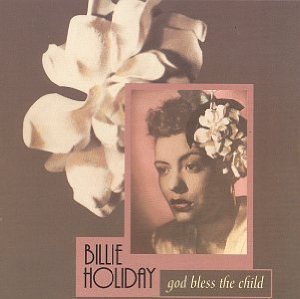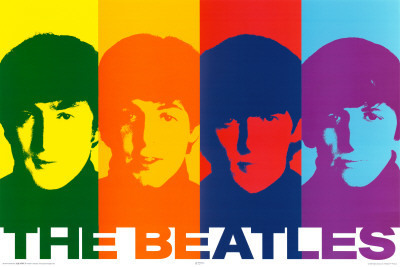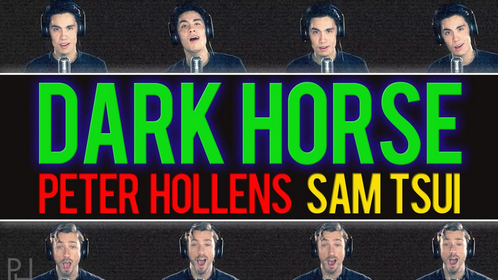MUSIC: Covers + “God Bless The Child” (1941)
This summer I’ve been working on a project - doing musical collaborations with my friends and writing critically about them in the context of my senior project on a cappella, Beyond The Score. It’s incredible making music with people you are close to, and I am grateful to have such talented and enthusiastic friends to share this experience with.
This time around I’m joined by Leo Chang, my roomie for the third year in a row, partner-in-crime at Backporch Productions, and a fellow member of the Stereotypes. With Rohan’s help, we’ve turned our living room into a live-studio and have started making Backporch Studio Sessions
Leo and I have been playing Billie Holiday’s jazz standard “God Bless The Child” for a few years now. It was the first song that I learned with a classical guitar and I’ve been hooked on the smooth, mellow sound ever since. Take a listen:
The story goes that Holiday and fellow composer Arthur Herzog, Jr. were writing together when Herzog asked Holiday for a title or words - something they could use to form a song. Around that time, Holiday’s mother had asked her for financial support to open an after-hours joint and Billie refused, telling her “God bless the child that’s got his own.” Herzog liked the phrase, and “God Bless The Child” was written in 20 minutes and recorded May of 1941. Take a listen to the original.
Since its release as a single for Columbia Records in 1942, the song has entered the canon of jazz standards. And though covers come from other legendary jazz women like Aretha Franklin (1962) and Ella Fitzgerald (1982), we also see pop stars like Barbra Streisand (1991) and Whitney Houston (1997) contribute to the tradition. We even see Moby (2007) make a cover, remixing the song for the BioShock video game soundtrack.
Looking beyond just Holiday’s track, we can start to ask big questions about the practice in general: what is a cover song? Is it a product of the original artist, with the covering musician simply paying tribute to another’s musical prowess? Or does the cover deserve its own musical recognition, displaying the covering artist’s mastery of the original plus an added personal flare?
Listening to Holiday’s original track and Moby’s remix evoke very different experiences, but would you say that they are the same song? At the musical core, they really are. But so much other context goes into creating the full meaning.
I guess the biggest question is this: do cover songs pass over creativity as a value? In this post I’d like to look at the cover song, with the belief that tracing the history of this musical form in rock music can provide context for why a genre like a cappella can thrive almost entirely on the practice of covering.
A Brief History of the Cover Song
Covering is and always has been a significant segment of the music marketplace and an integral, multifaceted attribute of popular music. In fact, covers have been a prominent part of the recording industry since its beginning. Of all the records charted between 1946 and 1950, 70% were covers with more than one recorded version.
In the 1950’s, Rock ‘n’ Roll emerged from a combination of rhythm & blues (R&B, or “race music”), country/western, and pop music. The efforts by record companies to rebrand or appropriate music within and across genres, as well as into genres-in-formation (like rock ‘n’ roll) shows the commercial purpose of early covers. Songs like “Sh-Boom”, originally done by the Chords in 1954, would be a hit on the R&B charts. Then, they’d be covered by a mainstream artist later in the same year, like the Crew Cuts’ cover of the same song, and the “whiter” version would rocket to the Top 10 on the Pop charts.
The covers of the 1950’s modified the original to reach a wider (and oftentimes whiter) audience. The original was seldom something intended by record companies for the audience to hear, and was often released only months before the cover achieved great success. In this sense, covers of the 50’s denied a relationship between the two songs to formulate meaning.
Instigated by the British Invasion, the covers of the early 1960’s had a definitive relationship with the past, unlike their forerunners of the previous decade. Groups like the Beatles and the Rolling Stones harnessed the raw energy of R&B and infused it into their pop and rock.
Carl Belz notes in his book The Story Of Rock (1969) that “early Beatles records contained an encyclopedia of Chuck Berry guitar licks, Buddy Holly harmonies, and Little Richard falsettos.” These characteristics acknowledged American black music at the same time the country was involved in the Civil Rights movement and Motown was producing homegrown blackened pop. These associations linked British musicians to what they considered essential American musical traits. This notion of authenticity promoted authentic sources through creative repetition - instead of commandeering these musical elements as their own, the coverers adopted the style and used it to inform their own music.
Towards the end of the 60’s, covers were done less frequently and tended to be relegated to B-sides and encores. The modern, romantic notion of authenticity was beginning to take shape, centered around creating something new out of one’s own resources.
With the emergence of metal in the 1970’s, we see an increased interest in classical motifs. The band Rainbow did a rendition of Beethoven’s 9th Symphony, and Manowar remade the “William Tell Overture” and “Flight of the Bumblebee”. These covers don’t necessarily focus on valorizing classical music, but instead authenticate the musical virtuosity respected by the subculture.
The emergence of punk rock covers in the mid-1970’s uses music as a political or social statement. Following the example of The Ramones, intentions ranged from playful irony to scathing parody. Punk covers deconstructed their originals, and attacked authenticity in rock as pompous, pretentious, and lame. But punk covers of the 70’s tried to both escape and allude to their referents, negating the original without attempting to obliterate it and consequently positioning themselves over and against it.
All of this - the adaptation of the 50’s, the homage of the 60’s and the parody of the 70’s - informs our current, postmodern understanding of covers. As rock’s history broadens, those who were teenagers in the early days grow into adults but retain the musical memories of youth. The past is now eternally present in the contemporary music industry: there are “oldies” radio stations; lucrative tours by aged bands like the Rolling Stones, Grateful Dead and Pink Floyd (all originally from the sixties); the practice of sampling in rap and hip hop; and tribute albums and cover bands that mimic the likes of Kiss, Lynyrd Skynyrd and Van Morrison.
Covers, Versions and A Cappella
Contemporary a cappella is unique from many other styles of music in that original compositions are the exception. Most groups arrange songs from the radio, movies, broadway or folk traditions. Essentially an adaptation, much of the value lies in the covering artists’ interpretation. Measuring the interpreter’s skill, in part, lies in how well the artist uncovers and conveys the spirit of the original, enhances the nuances of its melody, rhythm, phrasing, or structure, maybe adding something new, a sense of occasion or thread of irony.
The covers of a cappella are generally stereophonic: the audience is aware of the original and hears the cover in terms of it. The interplay between the cover and the referent within the audience’s mind, as well as source material on the page, drive an a cappella performance. As the resource material from the spectrum of music expands, we find that the reason to cover are as varied as the music they are emulating: the commercial advantage of familiarity, gaining credibility, clever artistic interpretation, demonstrating roots, or simply to sing what you hear in the world around you.
A particular effect of today’s music industry is the prominence of fixed, unchanging recordings. Whereas music used to be fluid - an artist subtly adapting each performance to the room, the mood, or themselves - there is now a stone-cold permanence in how we think of a song. This leads to a subtle distinction between cover and version that Deena Weinstein articulates nicely:
“A cover song iterates (with more or fewer differences) a prior recorded performance of a song by a particular artist, rather than simply the song itself as an entity separate from any performer or performance. When the song itself (as opposed to the performance) is taken as the reference for iteration, each performer does a version or a rendition of the song, and none of these versions is a necessary reference.” - Deena Weinstein, The History of Rock’s Past through Rock Covers
So a version separates the way a song is performed from the substance of the song itself. Much like how we are able to recognize and appreciate the Star Spangled Banner despite each performer doing it differently.
Indeed there are aspects of both covers and versions present in a cappella. When a vocal percussionist attempts to duplicate the particular sound of an 80’s snare hit, they are covering. But when Voices In Your Head deconstructs “We Found Love” and presents it with a choral opening, they are looking beyond the particular recording to find the inner substance of the artistic work.
“A cappella shows that categories such as ‘cover’ and ‘version’ sometimes blur. A cappella groups emulate particular performances of songs (created or captured on particular recordings) while simultaneously denying the very instruments used in those performances. And when an a cappella group strives to re-create aspects of a recording, it would seem the group is aspiring to cover. At the same time, some techniques or originality, such as interplay between background parts or reinterpretations of the lead melody, suggest an effort to version. Yet because they alter basic building blocks of the piece, other techniques of originality, such as musical quotation and formal expansion, undermine the case for a cappella as a versioning practice. ” Joshua Duchan, Powerful Voices
So taking it back to the initial question of this post: “do cover songs pass over creativity as a value?” Not at all. I believe covers in the context of a cappella invite more creativity by getting to the heart of the music and adapting each version to the creative and performative circumstanced. A blend of covering and versioning keeps a cappella arrangements fresh and relevant, while also grounding them authentically in the source material. While it may be easy to dismiss a tradition based on covering as hollow, it just goes to show that value can be found, and created, in many different places.
Thanks for reading!


